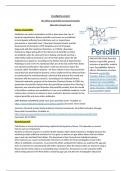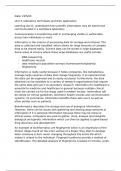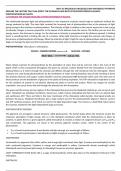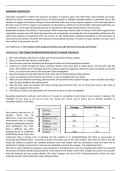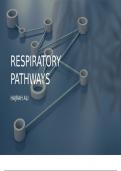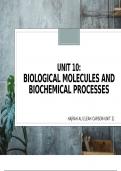Pearson BTEC • Applied Science 2016 NQF
Latest uploads for Applied Science 2016 NQF at Pearson BTEC. Looking for Applied Science 2016 NQF notes at Pearson BTEC? We have lots of notes, study guides and revision notes available for Applied Science 2016 NQF at Pearson BTEC.
-
2238
-
52
-
338
Modules Applied Science 2016 NQF at Pearson BTEC
Notes available for the following courses of Applied Science 2016 NQF at Pearson BTEC
- Unit 1 - Principles and Applications of Science I
- Unit 2- Practical Scientific Procedures and Techniques
- Unit 3 - Science Investigation Skills
- Unit 4 - Laboratory Techniques and their Application
- Unit 5 - Principles and Applications of Science II
- Unit 6 - Investigative Project
- Unit 7 - Contemporary Issues in Science
- Unit 8 - Physiology of Human Body Systems
- Unit 9 - Human Regulation and Reproduction
- Unit 10 - Biological Molecules and Metabolic Pathways
- Unit 11 - Genetics and Genetic Engineering
- Unit 12 - Diseases and Infections
- Unit 13 - Applications of Inorganic Chemistry
- Unit 14 - Applications of Organic Chemistry
- Unit 15 - Electrical Circuits and their Application
- Unit 16 - Astronomy and Space Science
- Unit 17 - Microbiology and Microbiological Techniques
- Unit 18 - Industrial Chemical Reactions
- Unit 19 - Practical Chemical Analysis
- Unit 20 - Biomedical Science
- Unit 21 - Medical Physics Applications
- Unit 22 - Materials Science
- Unit 23 - Forensic Evidence, Collection and Analysis
- Unit 24 - Cryogenics and Vacuum Technology
- Unit 25 - Forensic Fire Investigation
- Unit 26 - Forensic Traffic Accident Investigation
Popular books Pearson BTEC • Applied Science 2016 NQF

Frances Annets, Shirley Foale, Roy Llewellyn, Ismail Musa, Sue Hocking, • ISBN 9781292134093

John W. Davies, Ian K. Dunn • ISBN 9780273729525
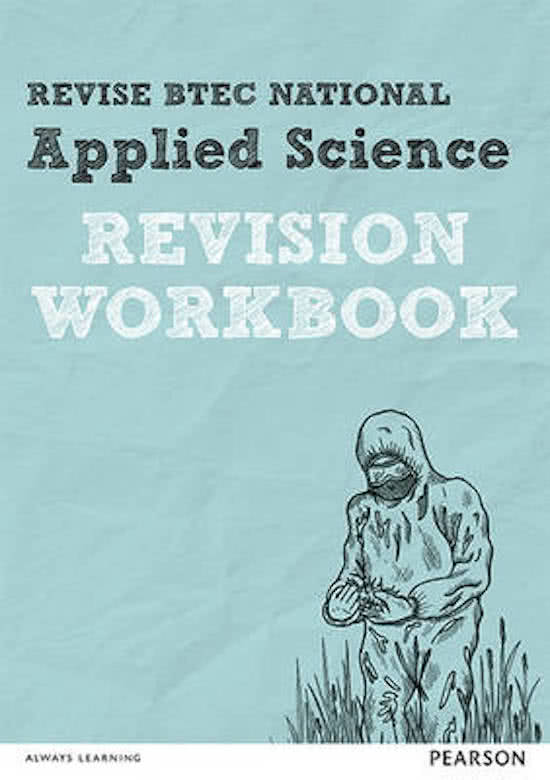
ISBN 9781292150031

Ward Merkeley • ISBN 9781664136700

David Ballard, John Bull • ISBN 9780435692124
Latest notes & summaries Pearson BTEC • Applied Science 2016 NQF
This is the first assignment of the unit 6 coursework, it includes all the aims needed to achieve a distinction grade as well as background, method, pictures, full bibliography and also areas where to resumbit your assignment if needed. It ends with a full evaluation. Use this assignment as a guide only and do not copy. Good luck!
Hello, this is a D* (Distinction) grade on unit 4D. This assignment includes information on 1 case study and 2 companies to achieve distinction standard. All references are included at the bottom. (Message me to discuss different prices!)
The relationship between light and photosynthesis is very important as plants cannot begin to synthesise without the energy produced by light. The more light received the increased rate of photosynthesis due to the presence of light giving energy to the reactions to photosynthesis. The intensity of light in relation to the inverse square law is the energy of intensity changes in inverse proportion to the square of the distance from the source. The further you are from the energy source, the decr...
Consists of merit and attempted distinction at partly met. Pass is a separate presentation which i have uploaded separately.
Overall Merit and distinction was partly met. Consists of task 2 and 3, anaerobic respiration experiment and results. The effect of smoking, and pollutants on respiration.
This document consists of Pass, merit and distinction. The distinction was partly met so overall got a merit.
The reproductive system of the body consists of tissues, glands and organs involved in producing offspring by fertilisation of gametes, and by carrying of a foetus. It is also to ensure the survival of species. Both female and male reproductive system consist of genital tract, a tube that runs from the gonads. (National Cancer Institute, 2019)
B. P2 DESCRIBE HOW HOMEOSTATIC MECHANISMS MAINTAIN NORMAL FUNCTION. B. M2 EXPLAIN THE ROLE OF HORMONES IN HOMEOSTATIC MECHANISMS B. D2 ANALYSE THE IMPACT OF HOMEOSTATIC DYSFUNCTION ON THE HUMAN BODY
A.P1 DESCRIBE THE ORGANISATION AND FUNCTION OF THE NERVOUS SYSTEM IN RELATION TO CARDIOVASCULAR AND RESPIRATORY REQUIREMENTS A.M1 EXPLAIN HOW NERVOUS IMPULSES ARE INITIATED, TRANSMITTED AND COORDINATED IN THE CONTROL OF THE CARDIOVASCULAR AND RESPIRATORY SYSTEMS A.D1 ASSESS THE ROLE OF THE NERVOUS SYSTEM IN COORDINATING THE CARDIOVASCULAR AND RESPIRATORY SYSTEMS
In this experiment, caffeine was used to determine the increase in heartrate, when increasing the amount of concentration. Caffeine was used on a water flea known called daphnia, to see the outcome. The results show that an increase of caffeine concentration increases the heartrate of the daphnia. This was tested by the daphnia being observed underneath the microscope. This technique was shown to be an effective way of analysing the heartrate, this would mean that the same effect is also opposed...

